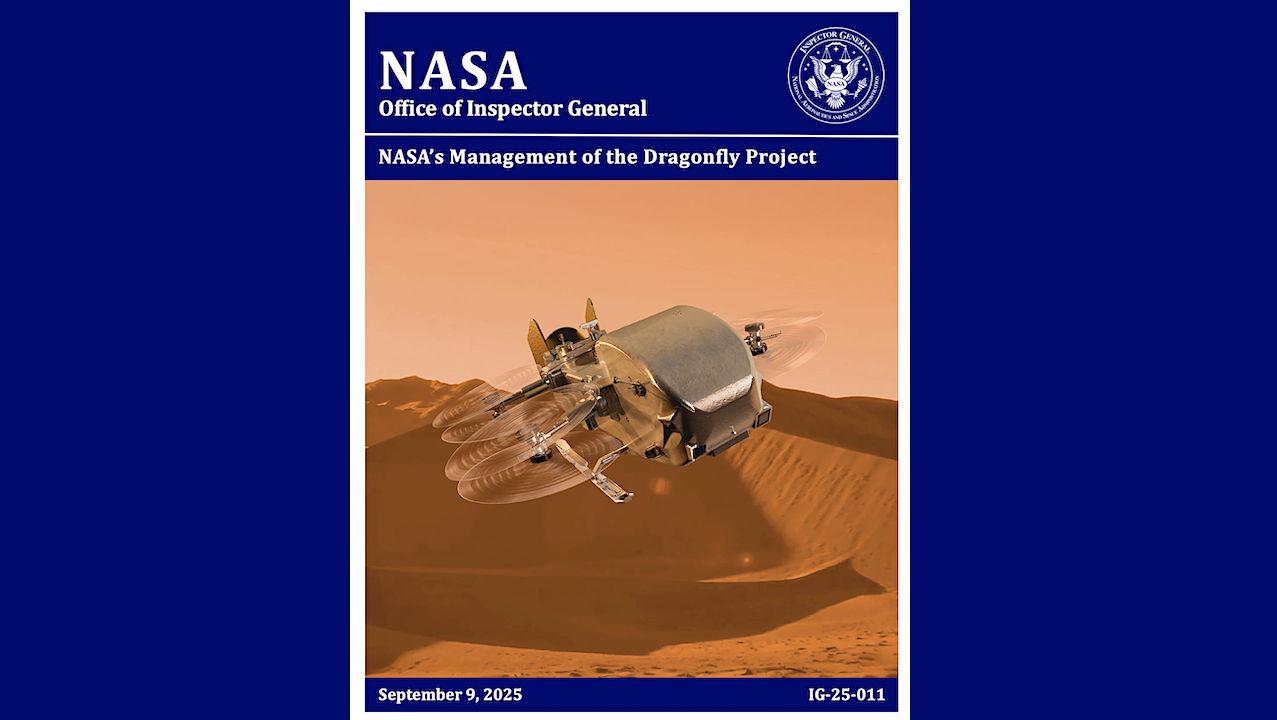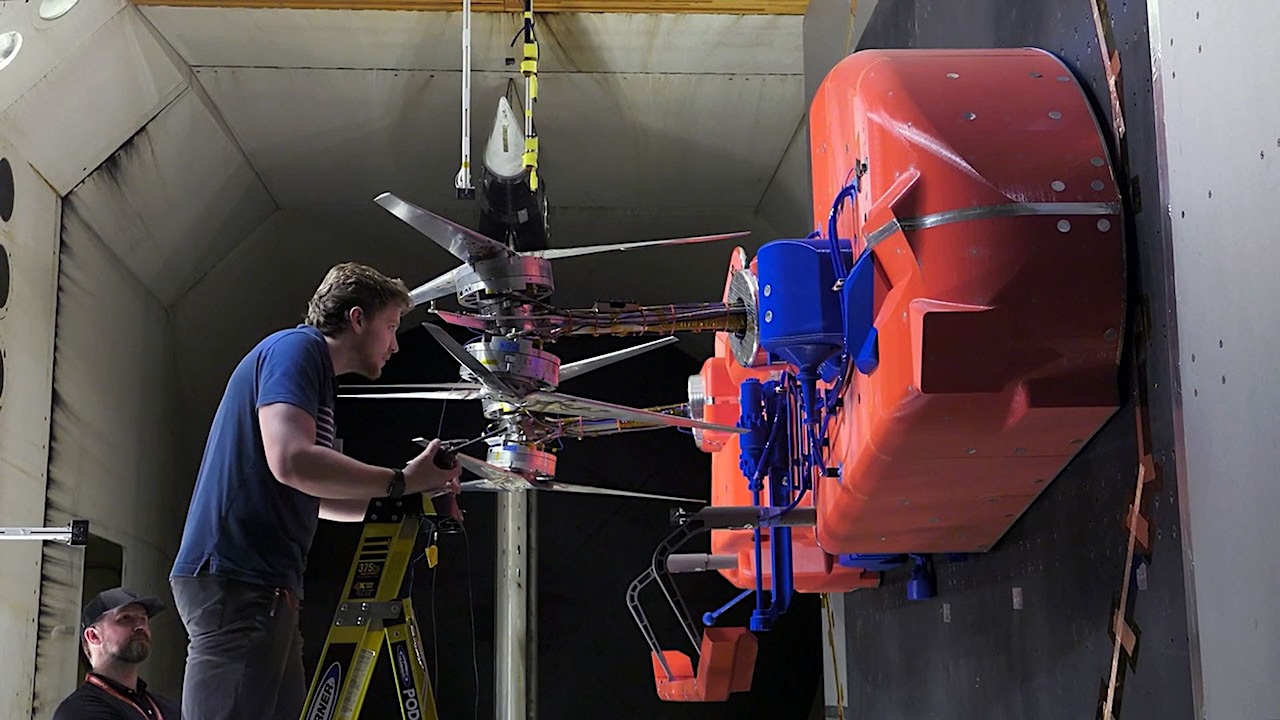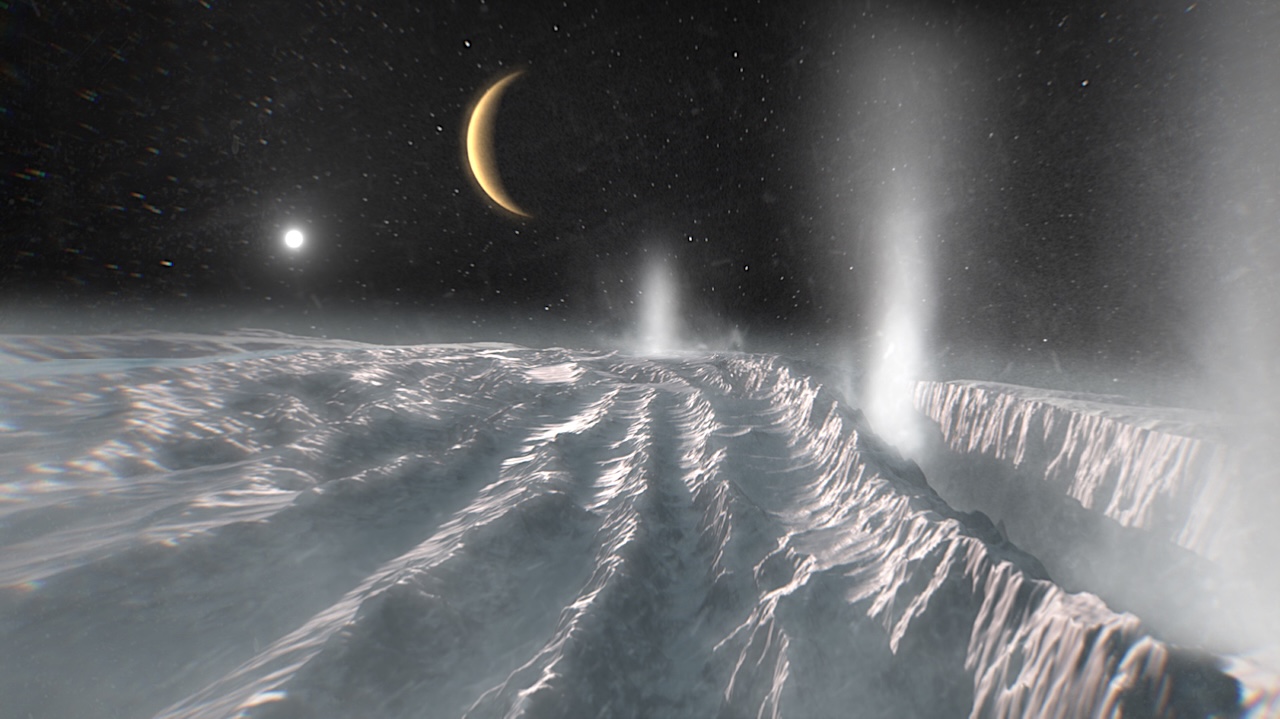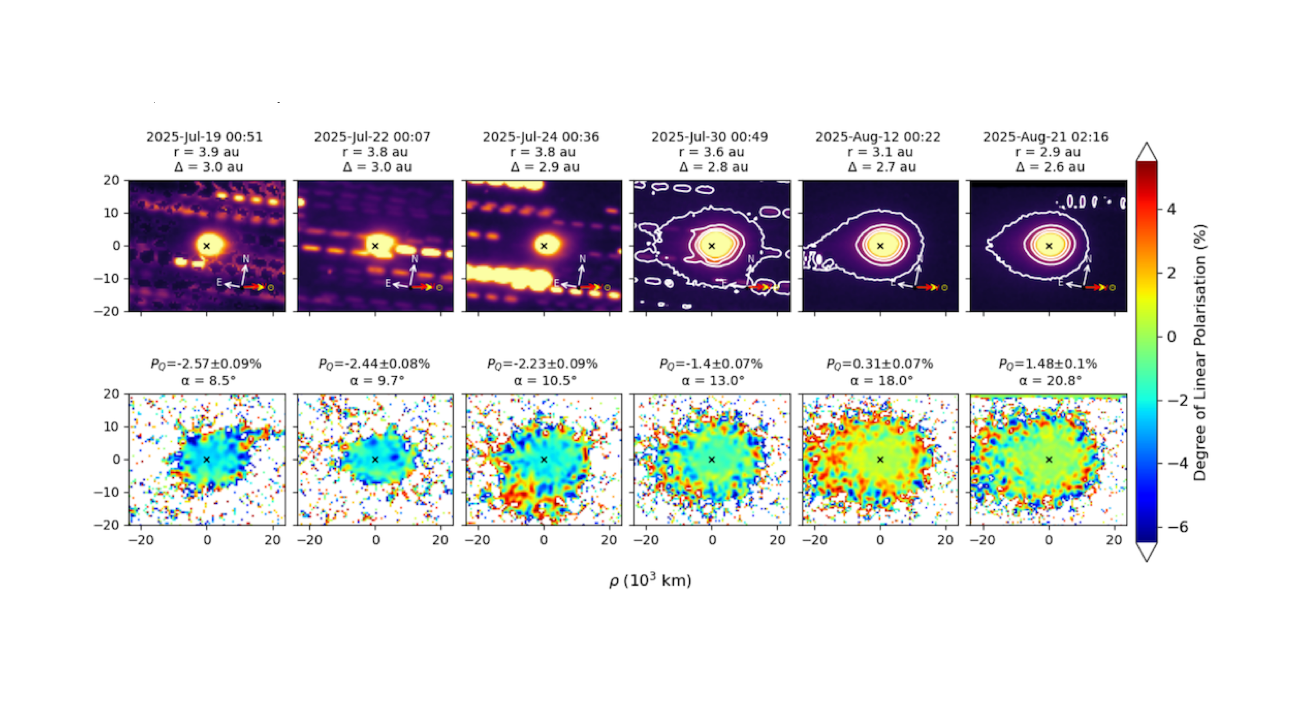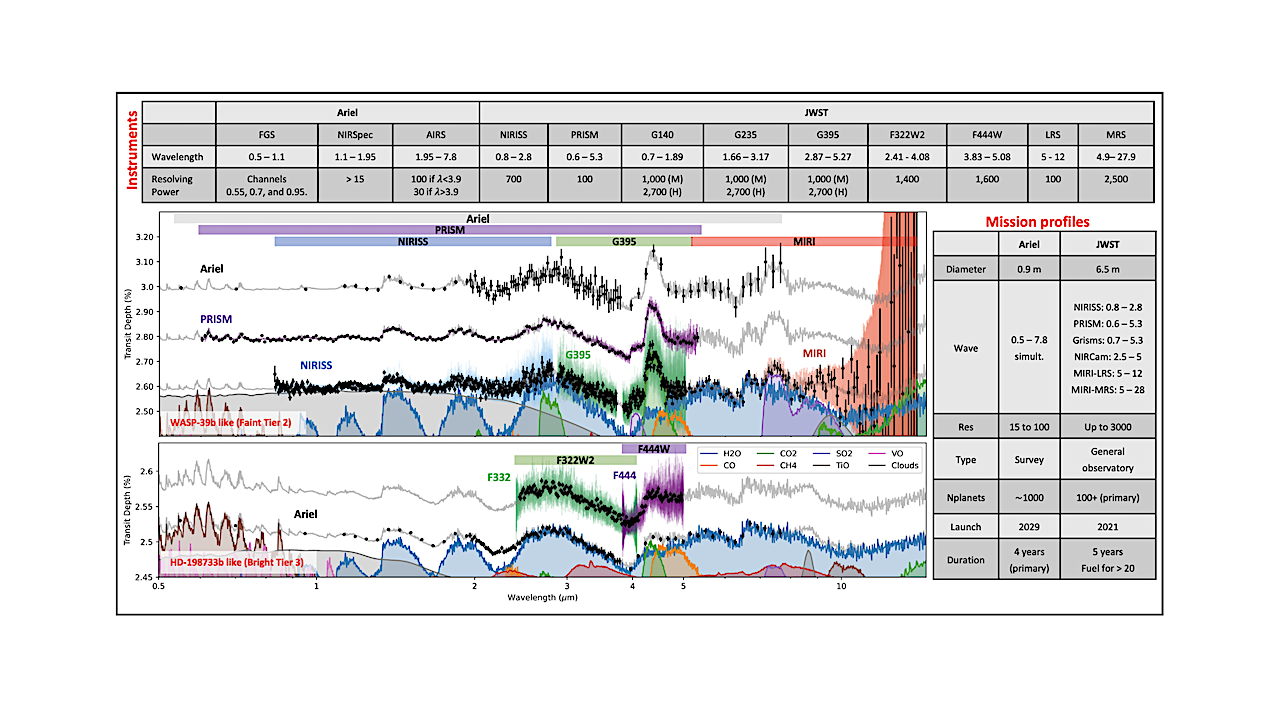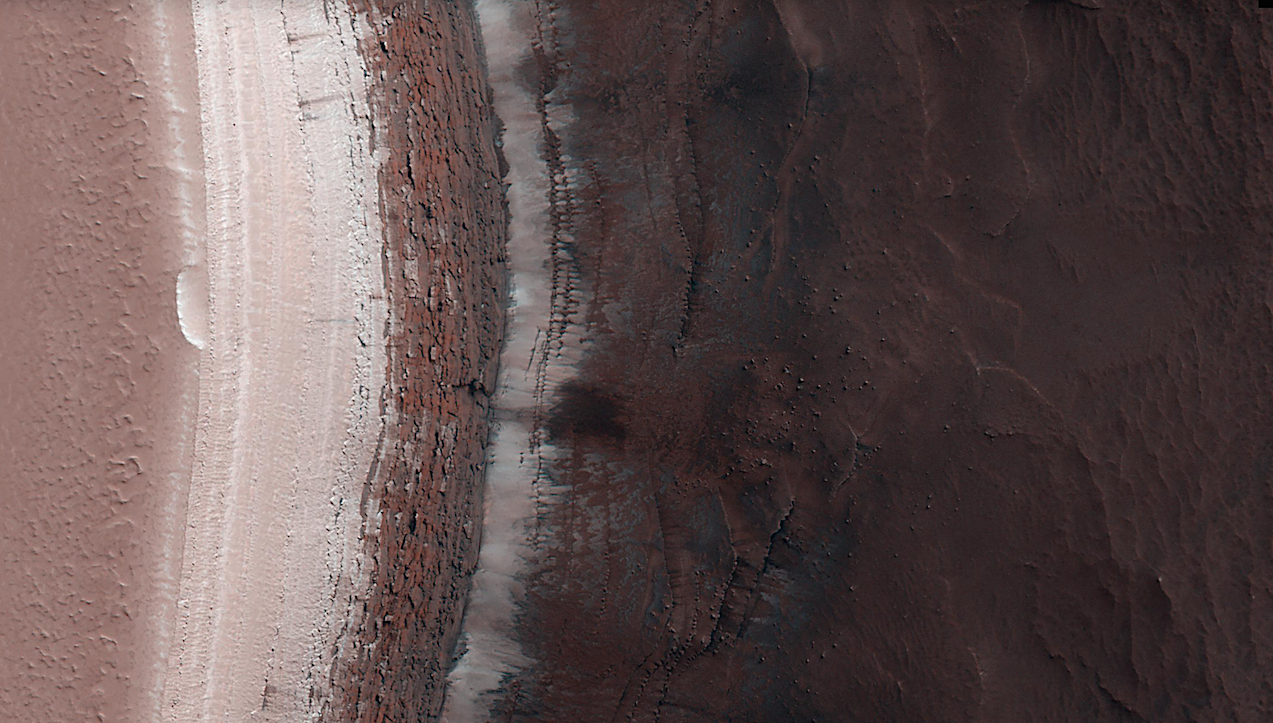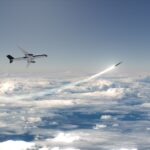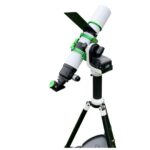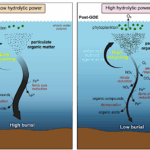NASA OIG Report: NASA’s Management Of The Dragonfly Project Dragonfly, a rotorcraft lander that will fly like a large drone, is designed to gather samples from Saturn’s moon Titan, characterize
Astrobiology27- Page
Technicians install and adjust the rotors on the full-scale test model representing half of the Dragonfly lander in the Transonic Dynamics Tunnel facility at NASA’s Langley Research Center. During a
An artist’s impression of plumes erupting onto the surface of Enceladus. Its fellow moon Titan is seen in the sky, and the distant Sun beyond. Credit ESA/Science Office. Larger image
NASA Science Mission Directorate C.2 Solar System Science solicits proposals for research, data analysis, data preservation, and tools that support investigations to help ascertain the content, origin, and evolution of
Spectral fits to TRAPPIST-1 e’s stellar-contamination-corrected transmission spectrum. Top: bestfitting forward models for three different partial pressures of N2 and CH4 (solid, dotted, and dashed colored lines) compared to a
White-light TRAPPIST-1 e JWST/NIRSpec PRISM transit light curves. (Top) Datapoints of the transit event (grey; binned at a cadence of 14-seconds) along with the best-fit transit plus systematics model (black;
An illustration of the adjusted telluric models for the solar and Titan spectra, where a 10% reduction from the best-fit model is applied to the solar spectrum and a 10%
Deep imaging (top) and polarimetric (bottom) maps of 3I from a subset of VLT observations. The colour scale in the imaging maps does not reflect the absolute brightness of the
Synoptic view of the key performances of the JWST’s instruments and Ariel for transiting exoplanets. Top table summarises the characteristics of instruments and observing modes for JWST. Central left panel:
An ice cap about three kilometers (two miles) thick exists at the North Pole of Mars. In some locations its edge is a cliff about 800 meters (half a mile)
-
 012024 in Review: Highlights from NASA in Silicon Valley
012024 in Review: Highlights from NASA in Silicon Valley -
 02Panasonic Leica Summilux DG 15mm f/1.7 ASPH review
02Panasonic Leica Summilux DG 15mm f/1.7 ASPH review -
 03How New NASA, India Earth Satellite NISAR Will See Earth
03How New NASA, India Earth Satellite NISAR Will See Earth -
 04And Thus Begins A New Year For Life On Earth
04And Thus Begins A New Year For Life On Earth -
 05Astronomy Activation Ambassadors: A New Era
05Astronomy Activation Ambassadors: A New Era -
06SpaceX launch surge helps set new global launch record in 2024
-
 07Space Force plans new ‘Futures Command’ amid pressure to speed up modernization
07Space Force plans new ‘Futures Command’ amid pressure to speed up modernization


